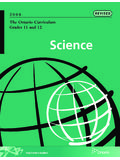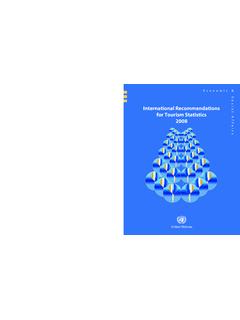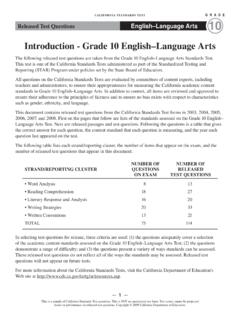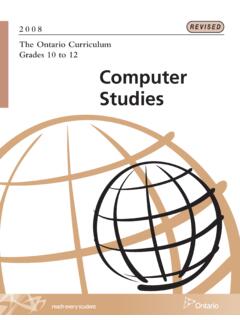Transcription of The Health and Social Care Act 2008 - GOV.UK
1 July 2015 The Health and Social Care Act 2008 Code of Practice on the prevention and control of infections and related guidance July 2015 The Health and Social Care Act 2008 Code of Practice on the prevention and control of infections and related guidance 2 Title: The Health and Social Care Act 2008 Code of Practice of the prevention and control of infections and related guidance Author: Public and International Health Directorate, Health Protection and Emergency Response Division, Infectious Diseases Branch 10200 Document Purpose: Guidance Publication date: July 2015 Target audience: CCG s CEs, NHS Trust CEs, Foundation Trust CEs, Medical Directors, Directors of PH, Directors of Nursing, Local Authority CEs, Directors of Adult SS, NHS Trust Board Chairs, Allied Health Professionals, GPs, Primary care organisations, dentists, independent healthcare and adult Social care organisations, directors of infection prevention and control, infection prevention and control leads, Care Quality Commission Contact details: Sally Wellsteed Healthcare Associated Infection and Antimicrobial Resistance Room 101 Richmond House London SW1A 2NS You may re-use the text of this document (not including logos) free of charge in any format or medium, under the terms of the Open Government Licence.
2 To view this licence, visit Crown copyright Published to , in PDF format only. 3 The Health and Social Care Act 2008 Code of Practice on the prevention and control of infections and related guidance 4 Contents The Health and Social Care Act 2008 .. 1 The Health and Social Care Act 2008 .. 3 Contents .. 4 Executive summary .. 5 Part 1: Introduction .. 7 What and who is the code of practice for? .. 7 The terms used in this document .. 8 Background .. 8 How will the code be used? .. 9 How will compliance be judged? .. 10 What happens if a registered provider does not meet the requirements in the code? .. 10 Commissioning of services .. 10 Key components to support compliance .. 10 Part 2: The Code of Practice .. 12 Part 3: Guidance for compliance .. 13 Part 4: Guidance tables .. 33 Appendix A: Examples of interpretation for adult Social care .. 39 Appendix B: Examples of interpretation for primary dental care.
3 46 Appendix C: Examples of interpretation for independent sector ambulance providers .. 52 Appendix D: Examples of interpretation for primary medical care .. 57 Appendix E: Definitions .. 63 Appendix F: Regulations (extract) .. 72 Bibliography .. 74 5 Executive summary Good infection prev ention (including cleanliness)1 is essential to ensure that people who use Health and Social care ser vices rece ive safe and effective car e. Effective pr ev ention and control of infection must be part of everyday practice and be applied consistently by everyone. Good man ag ement and organis ational processes are cr ucial to make sure that hig h standards of infectio n prev ention (including c leanliness)are developed and maintained. This document sets out the Code of Pr actice on the prev ention and control of infections, under The Health and Social Care Act It will a pply to registered provide rs of all healthcare and adult Social care in England.
4 The Code of Practice (Part 2) sets out the 10 criteria ag ainst whi ch the Care Quality Commission (CQC) will jud ge a registered provider on how it complies with the infection prevention requirements, whi ch is set out in regulation s. To ensure that consistently high lev els of infection prev ention (including cleanliness) are dev eloped and maintained, it is essential that all provide rs of Health and Social care read and consider the whole document and its application in the appropriate sector and not just selective parts. Par ts 3 and 4 of this document will help registered provide rs inte rpret the criteria and dev elop their own risk assessments. The a ppendices provide e xamples of how a proportion ate approach could be a pplied to the criteria in all sectors and it is impo rtant to read the e xamples giv en in the a ppendices, alongside the guidance under each criterion in Part 3 of this document.
5 The bibliography lists a r ange of supporting na tional guidance. This document b uilds on the previous Code of Pr actice: The Health and Social Care Act 2008 Code of Practice for Health and adult Social care on the p rev ention and cont rol of infections and related guidance. The code applies to NHS bodies and providers of independent healthcare and adult Social care in England, including primary dental care, independent sector ambulance providers and primary medical care providers. We have revised the previous Code of Practice document to reflect the structural changes that took effect in the NHS from 1st April 2013 and the role of infection prevention (including cleanliness) in optimising antimicrobial use and reducing antimicrobial resistance. The law states that the Code must be taken into account by the CQC when it makes decisions about registration against the infection prevention requirements.
6 The regulations also say that providers must have regard to the Code when deciding how they will comply with registration requirements. So, by following the Code, registered providers will be able to show that they meet the requirement set out in the regulations. However, the Code is not mandatory so registered providers do not by law have to comply with the Code. A registered provider may be able to demonstrate that it meets the regulations in a 1 This description of all activities related to infection prevention and control (IPC) was adopted in response to the consultation on the revision of the code of practice in 2015 to make it clear to non-specialists that cleanliness is an integral part of IPC. Throughout the document infection prevention should be interpreted as including cleanliness. 2 The Health and Social Care Act 2008 (Regulated Activities) Regulations 2014.
7 Available at: Executive summary 6 different way (equivalent or better) from that described in this document. The Code aims to exemplify what providers need to do in order to comply with the regulations. 7 Part 1: Introduction Good infection prev ention (including cleanliness)1 and prudent antimicrobial use are essential to ensure that people who use Health and Social care ser vices rece ive safe and effective car e. Effective pr ev ention of infection must be part of everyday practice and be applied consistently by everyone. It is also a component of good antibiotic stewardship as preventing infections helps to reduce the need for antimicrobials. Good man ag ement and organis ational processes are cr ucial to make sure that high standards of infection prev ention(including cleanliness) are set up and maintained. As the regul ator of Health and adult Social care in England, the Care Quality Commission (CQC) will provide assurance that the care people rece ive meets the fundamental standards of quality and safety.
8 These are set out in regul ation This document outlines what registered provide rs in England, should do to ensure compliance with registra tion requirement 12 (2) (h) [providers must] assessing the risk of, and preventing, detecting and controlling the spread of, infections, including those that are Health care associated . It also sets out the 10 compliance criteria ag ainst whi ch registered provide rs will be jud ged. Providers should note that Regulation 15 is also relevant to infection prevention and control. The CQC have published guidance for providers on meeting the regulations,3 including their enforcement policy and will use these documents in conjunction with this Code of P ractice and rel ated guidance when judging compliance. What and who is the code of practice for? The main pur poses of the Code of Practice on the prev ention and control of inf ections (The Code) are to: make the registra tion requirements relating to infection prevention clear to all registered provide rs so that they understand what they need to do to comply; provide guidance for the CQC s staff to make jud gement a bout compliance with the requirements f or infection prevention; provide information f or people who use the services of a registered provide r; provide information f or commissioners of ser vices on what they should expect of their provide rs.
9 And provide information f or the g ener al publi c Readers will note that only paragraphs in Part 3 of this document have been numbered, as these par ticular sections are lik ely to be specifically referenced by the CQC in ensuring compliance with the regul ation s. 1 This description of all activities related to infection prevention and control (IPC) was adopted in response to the consultation on the revision of the code of practice in 2015 to make it clear to non-specialists that cleanliness is an integral part of IPC. Throughout the document infection prevention should be interpreted as including cleanliness. 2 The Health and Social Care Act 2008 (Regulated Activities) Regulations 2014. Available at: 3 CQC Guidance for Providers on meeting the regulations. Available at: managers Th e Healt h and Social Car e Act 2008 Cod e of Pr actic e on the prev ention and control of infections 8 The terms used in this document There are a wide r ange of terms rel ating to service s, organis ational str uctures and diff erent ways to describe the same or similar things across Health and Social care.
10 In this document we have tried to harmonise some of those terms and use descriptions that are meaningful across all sectors. For e xample, we have used the term se rvice user to describe patient s, donors, residents and client s. Because National Health Service (NHS) Trusts (as an entity), primary medical and dental car e, independent healthcare, independent sector ambulance provide rs, and adult Social care provide rs are all required to register with the CQC as provide rs of Health or adult Social care, they are refer red to in this document as registered provide rs . The term care worker is used to refer to a ny empl oy ee whose nor mal duties inv olve providing direct care to service users, for e xample medical staff, nurses, healthcare assistants, care assistants and v olunteers. The term independent-sector ambulance provide r includes triage, medical or c linical advice provided remotely, face -to-face tre atment and t ransport service s.















